Peter Morgan is a student at Harvard Law School.
Go to one of the many Starbucks picket lines, and you could very well see Barbie. At a strike at the Elmwood store, the first and now year-old bargaining unit, most of the signs I saw demanded, in more direct language, workplace dignity and rights. But on one of them, I saw her, in pure meme form, demanding the same. The image: Barbie showing off her outfits, saying she’s got the clothes from every career. Below, her friend points to a Starbucks apron with a union pin, asking (incredulously? admiringly?) if “you’re standing in solidarity with Starbucks Workers United?” And then the call to action: Barbie gives her friend a gesture — as if to say what or of course — and responds “You haven’t?”
This is just one meme from the Starbucks Workers United campaign, and there are many. They come in all forms. Some are printed signs and posters (like this one); others travel via internal text; and others go out on Twitter, Instagram, and TikTok. They’re not the media campaign itself, but they are a part of it. They come from a more (inter-)national circulation, but they are used for often more local, or at least interest-based, communities. They are, in short, from and for the workers of the campaign, their new (although not only) language and strategy.
In a sense, this meme use is hardly surprising. Starbucks workers come from all walks of life and status. But many of them are young and digitally native. Many are queer. And many would label themselves Very Online (which they would likely describe, in ironic parenthesis, as derogatory). They all know Starbucks, but like any workforce, Starbucks workers share something of a world with each other outside of work — a shared set of practices, cultural knowledge, and in-jokes. These workers know who’s out of the Try Guys (Ned), who’s in Beyoncé’s basement (Sia), who spit on whom in Venice (Harry, Chris), and who, precisely, is fighting (the girls). They’ve marinated in the quick-draw, reaction-pic culture of stan twitter, and they’ve picked up all of its weapons. They have the image folders, the group chats, and the mental bank of templates (beaked Spongebob, surprised Pikachu, etc.), all at the ready to explain the latest offensive from corporate. Be scared, or be excited: these are the true-born children of Rihanna, and they’re here to demand their rights.
If none of this is legible to you, you wouldn’t be alone. As Gretchen McCulloch documents in her book, Because Internet, internet use has brought rise to its own specific, internally diverse language. Memes — that is, the visual kind, in which you can insert text according to a common structure — are just one form of this, a type of “collective folk texts that spread because people remix and remake them.” To get a meme and to use it for yourself requires a history with it. You have to see the meme take off, get used repeatedly, and understand how to apply it to a new situation. To be sure, this naturally creates a boundaried audience. As McCulloch puts it, “[t]he beauty of memes that are predicated on internet culture is that they can bring the internet together; the hardship of them is that they draw boundaries around who gets to be an insider and who doesn’t.”
The Starbucks union campaign has been a ready source of this kind of hieroglyphic effect. Take, for instance, this Lea Michele meme from a collaboration between More Perfect Union (a general, pro-labor advocacy account) and Starbucks Workers United. For a second, think about how anyone could ever understand this — the small miracle of that. You’d need to know, first, who is pictured: Lea Michele, of Broadway and Glee fame.
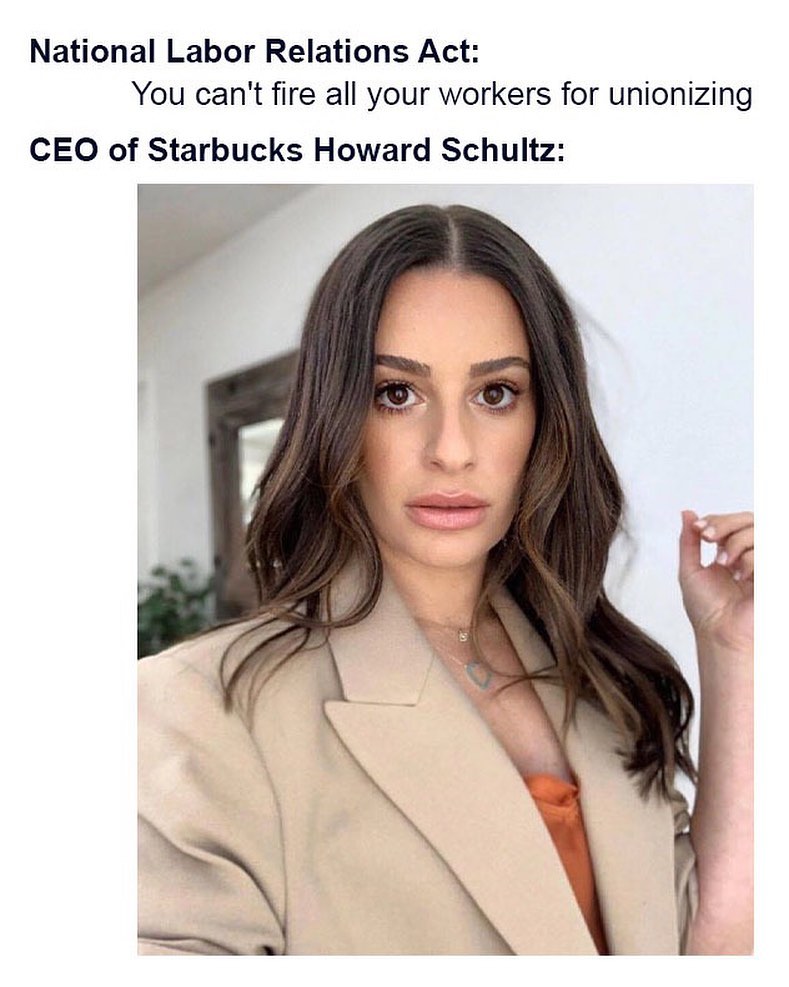
But that wouldn’t be enough on its own. You’d have to know that Michele is the subject of a nearly decade-long internet joke that she cannot read; that this picture has been used as a shorthand for not — or refusing to — read something; and, potentially, that this echoes another meme (from the TV show Arthur), in which a character says they won’t be stopped because they can’t read. Add in Lea Michele’s alleged mistreatment of cast members, and the meme marshals a surprising amount of background history in one punch. Who is Howard Schultz? He’s all this. In one image, there’s a thousand words and a character study — Howard Schultz as intransigent, as diva, as cruel.
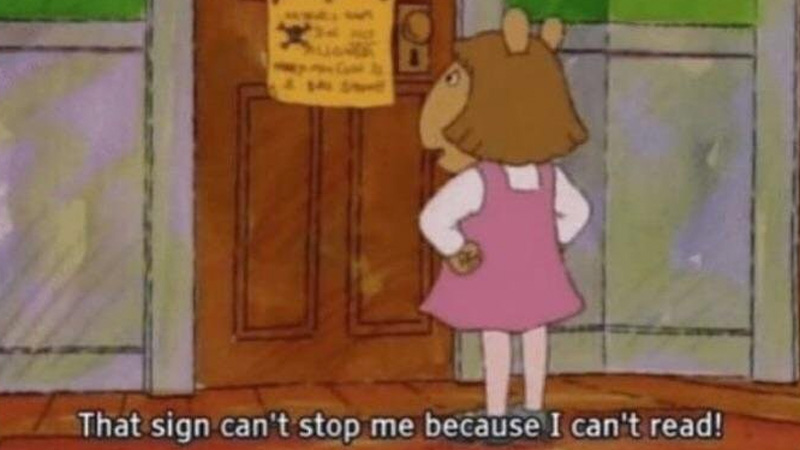
To state the obvious, there’s a Gen-Z flavor to this gentle chaos. To be expected: many of these workers were the kids of the financial crisis, of Zoom and masks and now, finally, work. After the pandemic, you could try to say that they, in internet speak, “broke their brains,” but the better answer is that they’re really just using them.
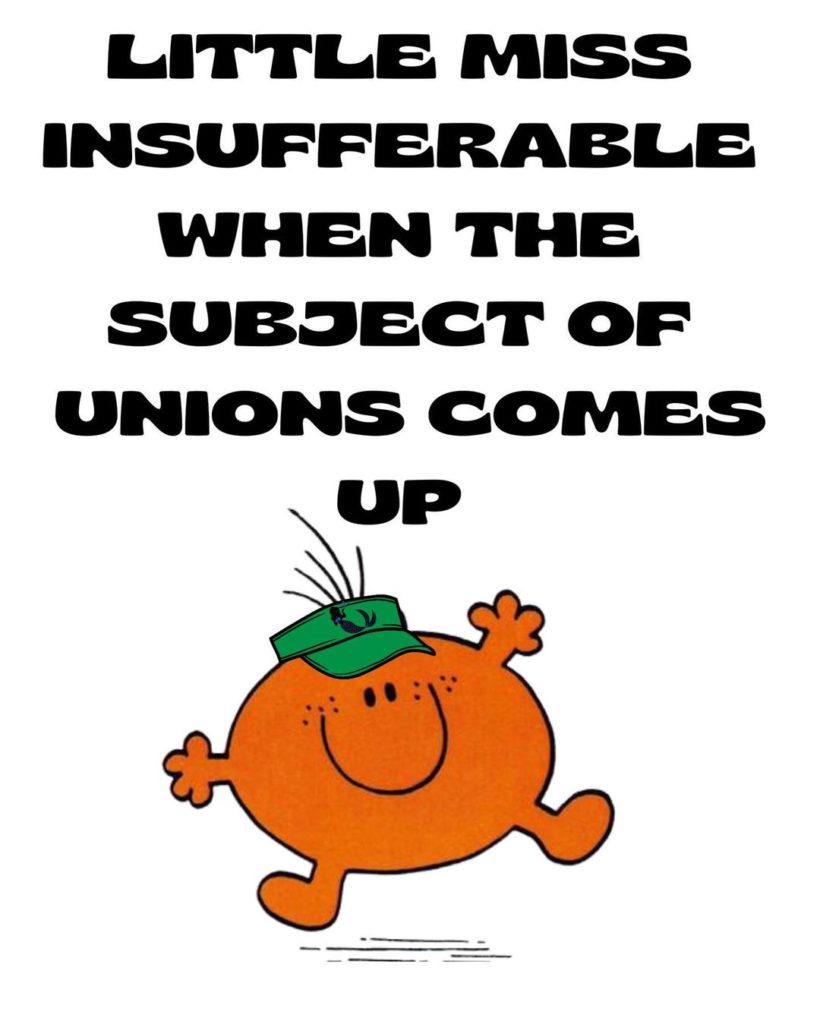
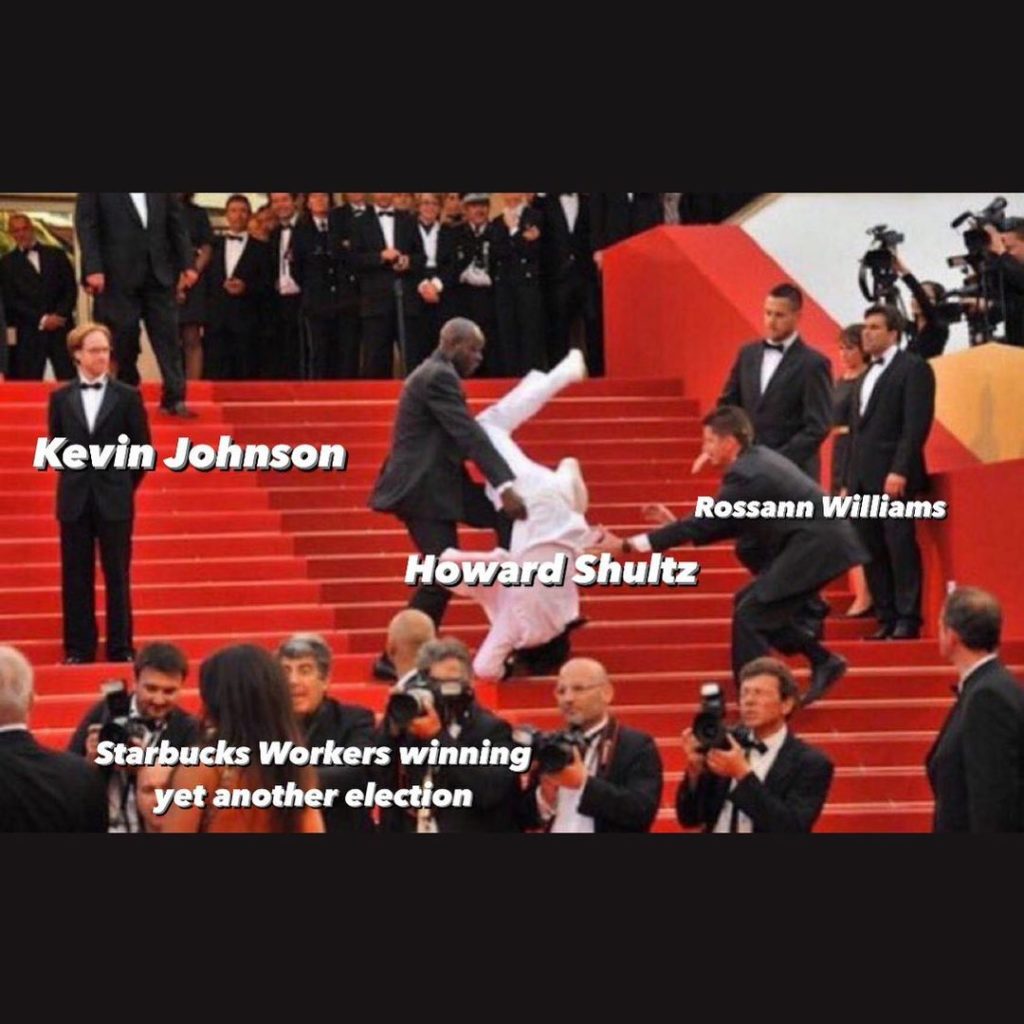
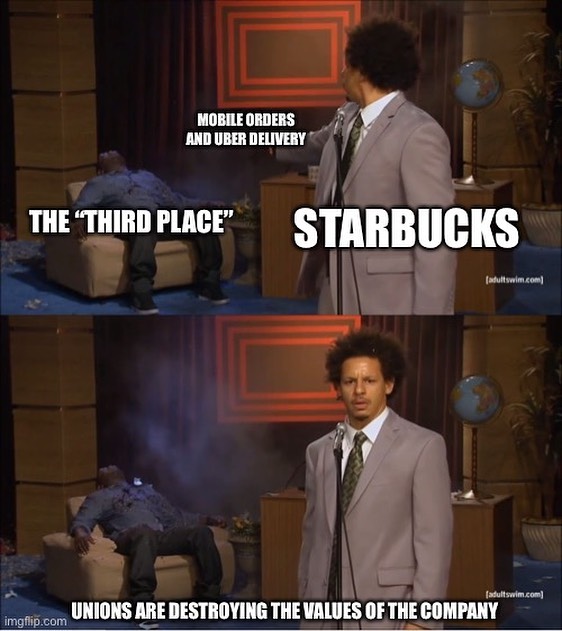
There is, of course, a use to all of this. The workers know that, and so does much of implicit audience. As McCulloch writes, the flipside of being obscure is that users of memes can attract and repel different audiences at the same time; “[m]emes can be a linguistic recruitment tool: observers want to be part of the in-group that gets the memes.” Workers can speak a language to a younger audience that Starbucks corporate could never speak with the same fluency. The virtues of this strategy are many: the memes express what kind of people the organizers are, identify themselves as a credible peer group, and do so in a way that corporate PR teams may literally be unable to understand.
But this doesn’t mean the union’s media campaign is itself exclusionary. This is only one, relatively infrequent tool of their communication strategy (they don’t speak this way in Congress), and even then it is a small portion of their social media strategy (their most viral work tends to be more accessibly phrased infographics, video documentation, and direct calls to action). Their media campaign rests instead on a decentralized, specialized dynamic. In a structure resembling the DSA, there is both a central account and separate accounts for individual bargaining units, allowing for both broad-reaching statements and more personality-specific material. Memes, then, come in assuming a specific context — that the union at large will be explained clearly elsewhere, but that the union near you is full of people who get you. It’s a large media landscape, and by design, it may be uneven in whom it reaches. For any given person, there is probably something that you get, but there is probably also something you don’t. (Their use of TikTok trends is where I, at 25, become too old to comment.)
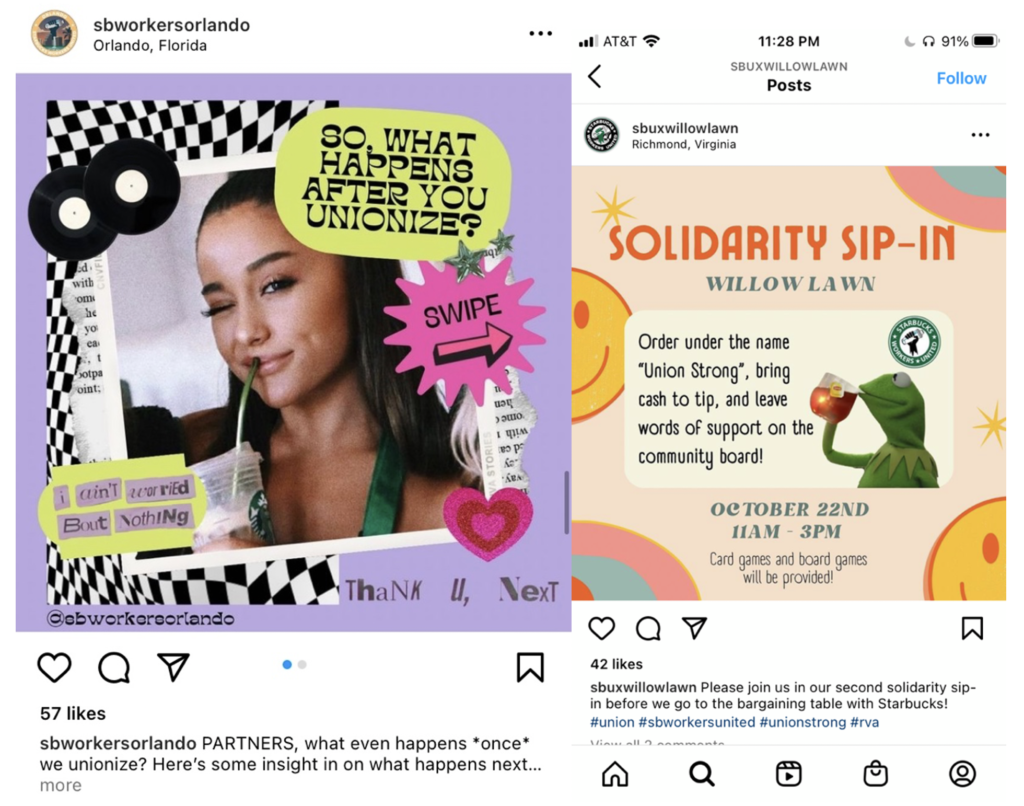
To some, the memes are just a misstep, an excess of the too-online. But this is what at least some organizing is likely to look like from a newer, if not exclusive cultural face of labor. Surely, the content of it may raise new questions about what a new generation of labor’s values (or at least signs) are. What it is — cool, defiance, or a reclaimed form of cringe — may not matter. What matters is that, after years of corporate dismissal, disregard, and now active subterfuge, the workers get to bring out something that’s theirs. It may assume a background that is not entirely yours. It may, as unions always have, aim directly at the group they aim to represent. So it may not always be for you.
Okay. And what about it?
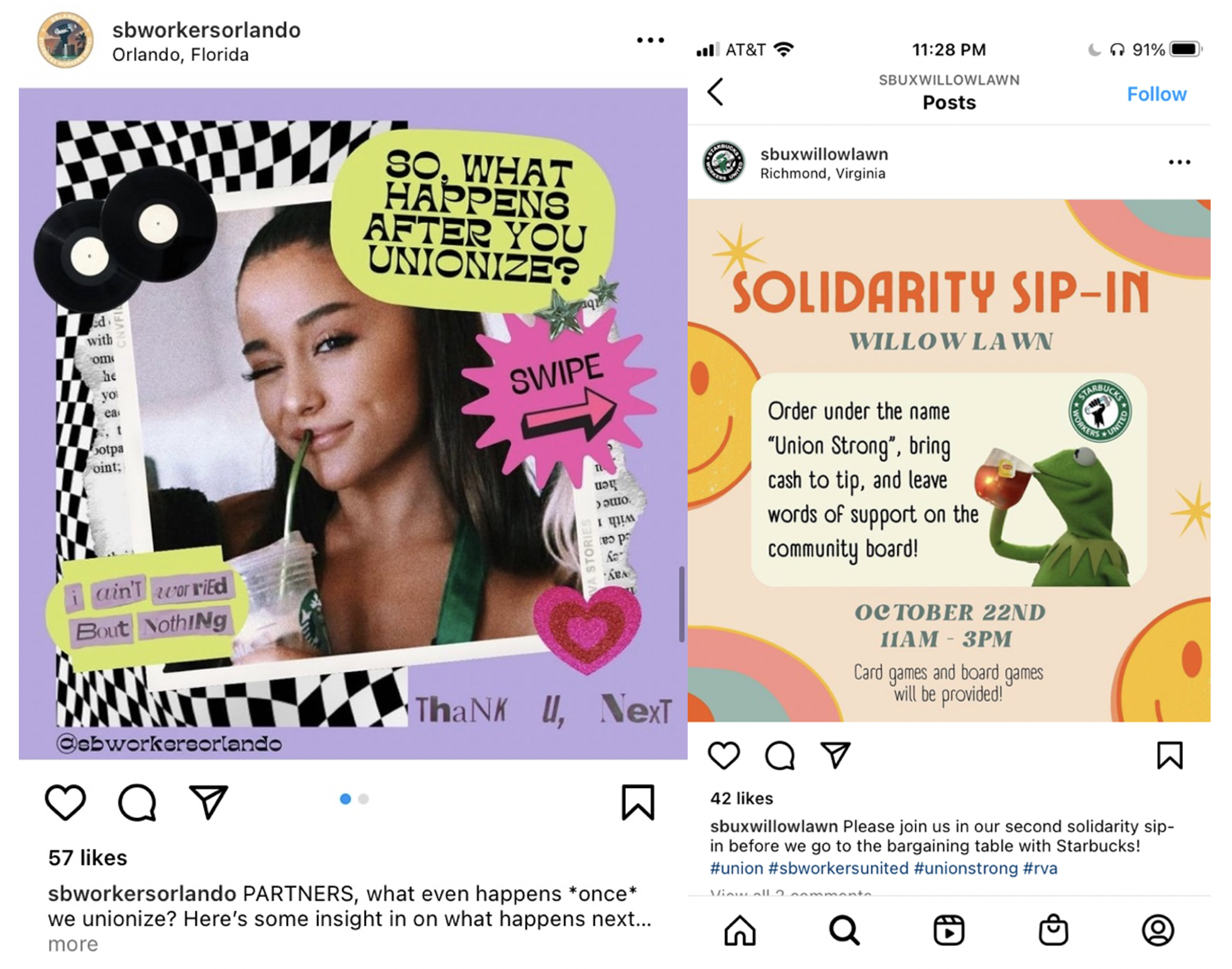





Daily News & Commentary
Start your day with our roundup of the latest labor developments. See all
April 18
Disneyland performers file petition for unionization and union elections begin at Volkswagen plant in Tennessee.
April 18
In today’s Tech@Work, a regulation-of-algorithms-in-hiring blitz: Mass. AG issues advisory clarifying how state laws apply to AI decisionmaking tools; and British union TUC launches campaign for new law to regulate the use of AI at work.
April 17
Southern governors oppose UAW organizing in their states; Florida bans local heat protections for workers; Google employees occupy company offices to protest contracts with the Israeli government
April 16
EEOC publishes final regulation implementing the Pregnant Workers Fairness Act, Volkswagen workers in Tennessee gear up for a union election, and the First Circuit revives the Whole Foods case over BLM masks.
April 15
The Supreme Court ruled in favor of bakery delivery drivers in an exemption from mandatory arbitration case; A Teamsters Local ends its 18-month strike by accepting settlement payments and agreeing to dissolve
April 14
SAG-AFTRA wins AI protections; DeSantis signs Florida bill preempting local employment regulation; NLRB judge says Whole Foods subpoenas violate federal labor law.